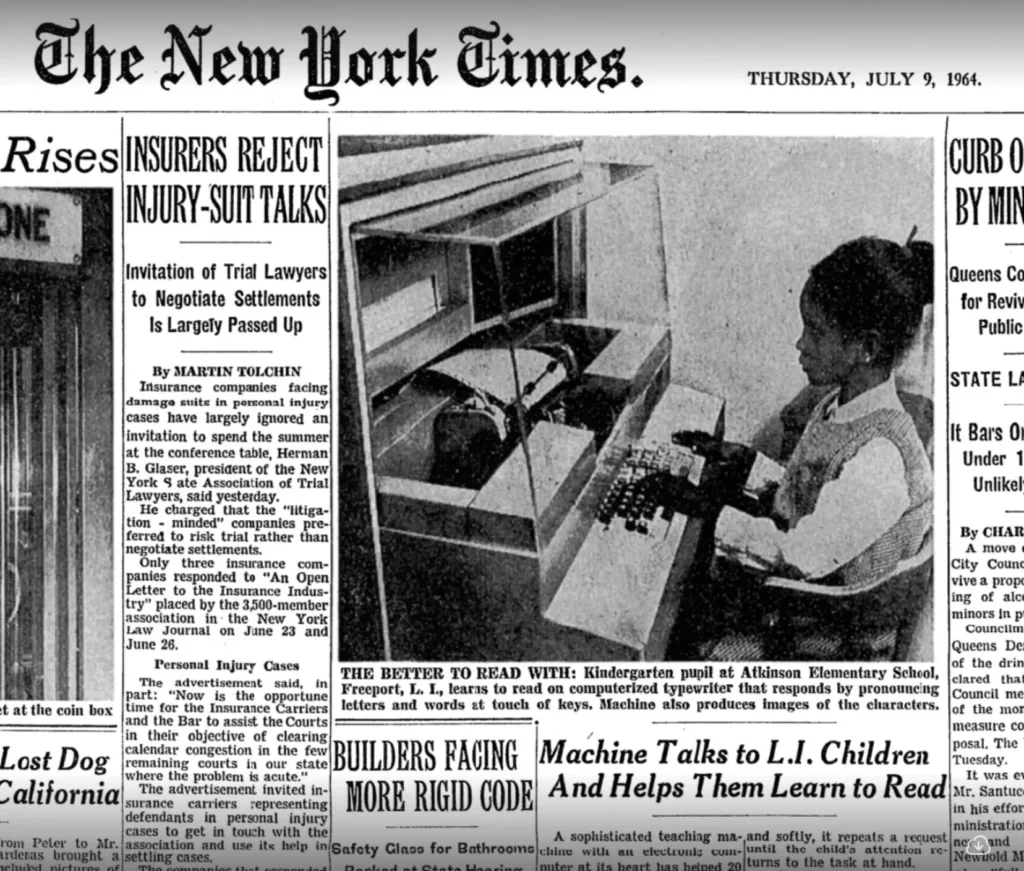Artificial Intelligence (A.I.) has emerged as a transformative force in various fields, and the realm of education is no exception. Sal Khan, CEO of Khan Academy, envisioned a groundbreaking shift in education with the integration of A.I. chatbots during a TED Talk. His prediction resonated with tech leaders like Sundar Pichai, Google’s CEO, who foresees the potential of providing every student with a personalized A.I. tutor. This article explores the future of chatbots in tutoring, delving into the promises, challenges, and the broader impact on the education landscape.
The Promise of Personalized Tutoring with A.I.
Sal Khan’s vision revolves around giving every student worldwide access to an artificially intelligent, personalized tutor. The idea is to leverage A.I. chatbots to revolutionize education by providing tailored lessons to individual students. A.I. tutoring bots, such as those introduced by Khan Academy and Duolingo, based on GPT-4, aim to deliver instant, customized instruction, closing achievement gaps more efficiently than traditional teaching methods.
Tech companies and philanthropists have been advocating for the adoption of A.I. in education, supporting initiatives like providing laptops for students and developing video tutorial platforms. The hope is that A.I. chatbots can bridge the gap in educational outcomes by offering relevant, individualized content to students, thereby enhancing learning experiences.
The Rise of Generative A.I. Tools and ChatGPT
The evolution of generative A.I. tools like ChatGPT adds a new dimension to the potential of A.I. in education. Platforms like Khan Academy and Duolingo have integrated A.I. chatbot tutors based on GPT-4, capable of generating human-like responses to user prompts. The use of such advanced language models raises enthusiasm for automated instruction, even as critics voice concerns about the lack of evidence supporting the transformative impact of tutoring bots on education.
Greg Brockman, President of OpenAI, envisions a future where A.I. tutors can establish a connection with individual students, offering guidance and inspiration similar to human teachers. The White House has also recognized the potential, directing efforts to shape A.I.’s role in transforming education and providing resources to support educators deploying A.I.-enabled educational tools.
Challenges and Criticisms Surrounding A.I.-Assisted Instruction
Despite the optimism surrounding A.I.-assisted instruction, education researchers and critics emphasize the need for caution. A.I. chatbots, they argue, may generate inaccurate information and could potentially elevate unreliable sources as authoritative figures in classrooms. Concerns also extend to biases within A.I. systems and their opacity, hindering teachers and students from understanding how chatbots formulate their responses.
Ben Williamson, a chancellor’s fellow at the Centre for Research in Digital Education, warns about potential harmful effects on student learning, stating that the evidence supporting the positive impact of A.I. chatbots is currently lacking. Additionally, there are worries about privacy, intellectual property, and the potential misuse of materials provided by educators and students for business purposes.
Also Read: Hello IDA, Hello Future: Volkswagen AI Voice Assistant Unleashed
Balancing Enthusiasm with Realism: A.I. in Education
While the enthusiasm for A.I. in education is palpable, educators and policymakers must strike a balance. Some argue that the hype over unproven A.I. chatbot tutors could divert attention and resources from more traditional, human-centered interventions proven to increase student graduation rates and college attendance.
Randi Weingarten, President of the American Federation of Teachers, emphasizes the importance of regulation to ensure fairness and safety in the deployment of A.I. tools. Collaboration between educators and policymakers is crucial to harness the potential of A.I. while guarding against potential risks.
Historical Context: Lessons from the Past
To comprehend the current wave of enthusiasm for A.I. in education, it’s valuable to explore historical parallels. In the 1960s, the advent of “teaching machines” fueled high expectations for revolutionizing education. These mechanical and electronic devices were programmed to pose questions on subjects like spelling or math, promising a tailored learning experience.
Capturing the zeitgeist of the time, Popular Mechanics ran an article in October 1961 titled “Will Robots Teach Your Children?” detailing the rise of experimental machine teaching across schools in the United States. These teaching machines, however, turned out to be cumbersome and didactic, creating a short-term sensation that ultimately fell short of the initial hype.


Fast-forward to the present, and we witness a similar narrative with A.I. teaching bots. Despite advancements in technology, it’s crucial to learn from history and approach the integration of A.I. in education with a nuanced perspective. While A.I. chatbots hold the promise of personalized, engaging, and effective learning experiences, the historical context underscores the need for a balanced and realistic assessment of their potential impact.
Also Read: Read this New Year Resolutions App Guide to Unlock Your Best Year
A.I. Chatbots as Study Buddies and Beyond
Enthusiasts envision A.I. tutoring bots as more than just educational tools—they could become study buddies that students consult discreetly. Former Big Tech executives, like Jerome Pesenti and Jared Grusd, have ventured into education, developing A.I. chatbots to assist students in solving math and science problems or organizing and structuring essays.
Sal Khan remains one of the most prominent advocates of tutoring bots, with Khan Academy introducing Khanmigo, an A.I. chatbot designed to help students think through problems rather than completing their schoolwork. Pilot programs are underway in several states to test the efficacy of these chatbot tutors in real educational settings.
Looking Ahead: The Road of Artificial Intelligence in Education
As the educational landscape undergoes transformative changes, the integration of A.I. chatbots in tutoring signifies both potential and challenges. Achieving the right equilibrium between harnessing the advantages of Artificial Intelligence and addressing concerns related to reliability, biases, and privacy is imperative. The collaborative efforts of educators, policymakers, and A.I. developers will determine whether the road to Artificial Intelligence in education leads to a genuine revolution in learning or remains an integral part of the ongoing discourse about the future of education.